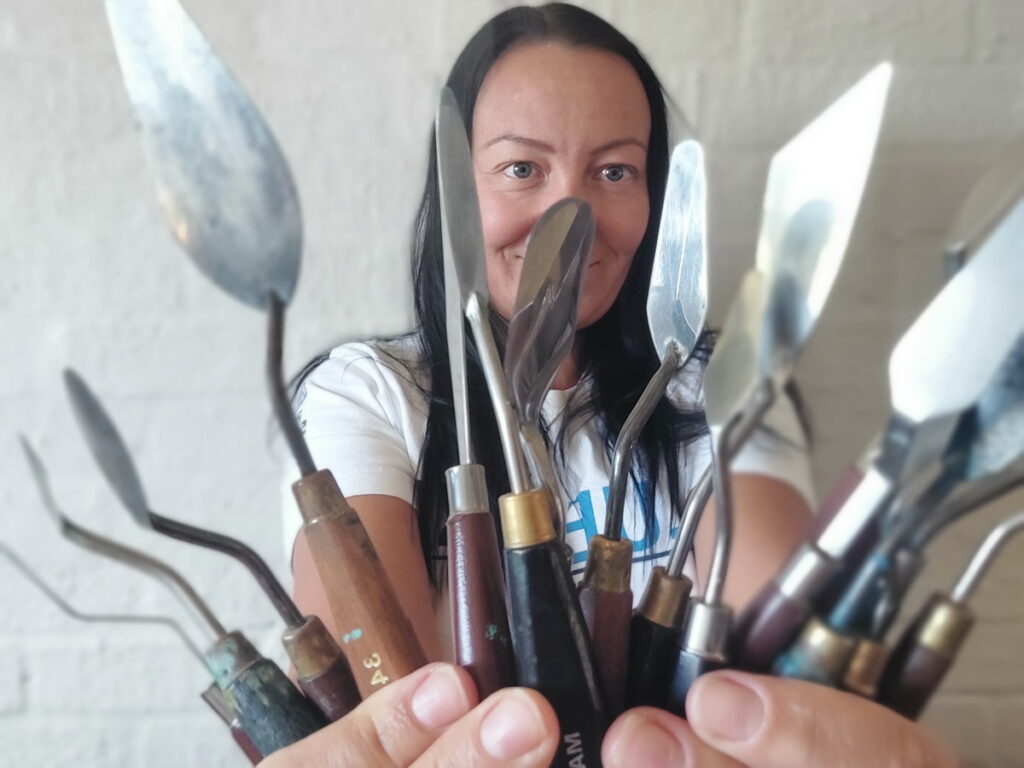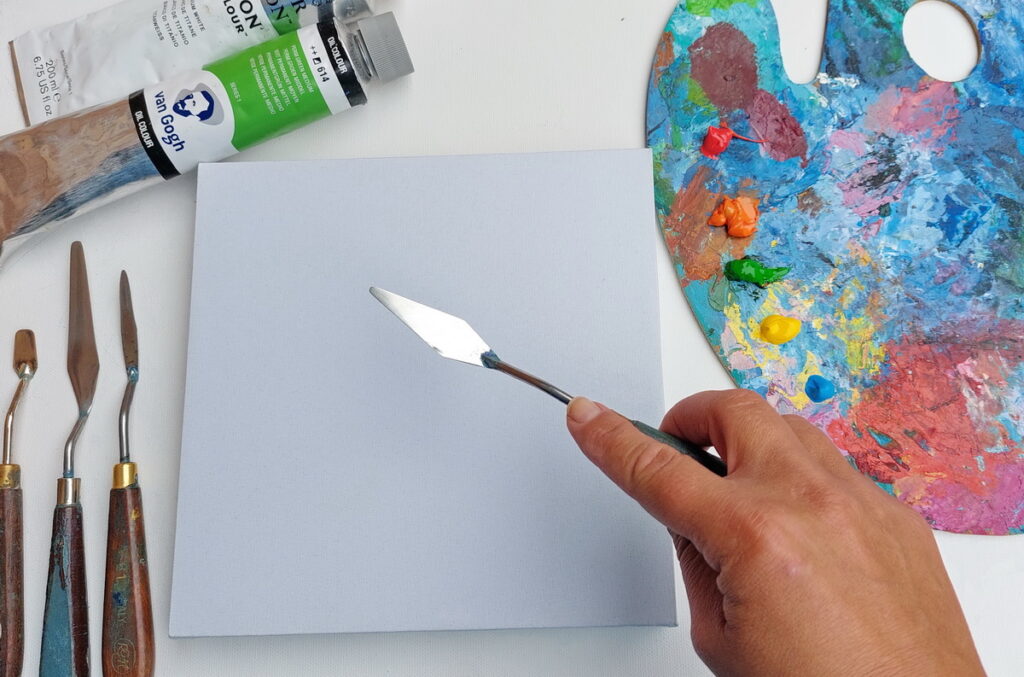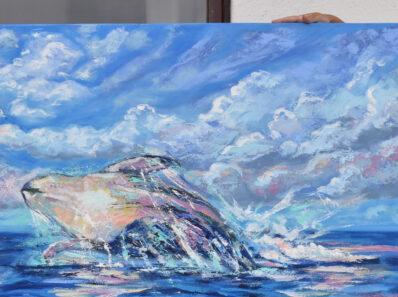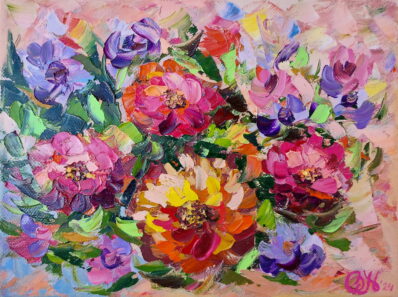
Oil painting with a palette knife is an exhilarating technique that offers bold textures, vivid colors, and a dynamic sense of movement. While traditional brushes provide precision and subtle gradients, palette knives excel in creating thick, expressive strokes and richly textured surfaces. For beginners and seasoned artists alike, exploring palette knife painting can open up a new world of creativity.
This guide will explore the types of palette knives, how to choose the right ones, tips for beginners, advantages, and challenges of this versatile painting technique.
What Is a Palette Knife?
A palette knife is a flexible, blunt tool traditionally used for mixing paints on a palette. In painting, it becomes a tool for applying and manipulating paint directly onto the canvas. Its smooth edges allow for spreading, layering, and sculpting paint in ways brushes cannot replicate.
Types of Palette Knives
Palette knives come in various shapes and sizes, each suited for specific techniques. Here are the main types:
- Straight Edge Knives:
These have flat, straight blades and are ideal for mixing colors or applying broad strokes of paint. - Offset Knives:
Characterized by an angled handle that keeps your hand away from the wet surface, these are perfect for spreading paint evenly or creating layered effects. - Pointed Tip Knives:
With a tapered tip, these knives are excellent for detailed work, such as creating thin lines, edges, or sharp textures. - Curved or Rounded Knives:
These are great for creating smooth, sweeping strokes and blending areas of color. - Diamond-Shaped Knives:
Ideal for intricate work, they can create small shapes, precise textures, and controlled applications.

How to Choose a Palette Knife
Choosing the right palette knife depends on your artistic style and the effects you want to achieve.
- For Beginners: Start with a mid-sized offset knife for versatility.
- For Detailed Work: Look for knives with pointed tips or smaller blades.
- For Large Canvases: Larger straight-edge or offset knives work well for broad, sweeping strokes.
- Material Matters: Opt for stainless steel blades for durability and flexibility. Plastic knives can be an affordable starting point but may lack durability and precision.

Getting Started: Tips for Beginners
- Prepare Your Workspace:
Use a sturdy canvas or painting board. A stretched canvas is ideal for beginners as it provides a firm yet flexible surface. - Choose the Right Paint:
Oil paints work best with palette knives due to their thick consistency. Avoid using thinner paints like watercolor or acrylic unless you use heavy-body acrylics. - Experiment with Techniques:
- Spreading Paint: Scoop up paint and spread it across the canvas like butter on bread.
- Layering: Build textures by layering thick paint. Allow each layer to dry slightly for defined effects.
- Scraping: Use the edge of the knife to scrape off paint or create fine lines and textures.
- Start Simple:
Begin with abstract compositions to focus on mastering knife control. Progress to landscapes, seascapes, or florals as your confidence grows.
Advantages of Palette Knife Painting
- Texture and Depth:
The thick application of paint creates tactile textures and adds a three-dimensional quality to your artwork. - Expressive Strokes:
Palette knives produce bold, sweeping strokes that convey energy and emotion. - Easy to Clean:
Unlike brushes, knives are easy to clean—just wipe off the paint with a cloth. - Time-Saving:
Large knives can cover broad areas quickly, making them ideal for painting large canvases. - Unique Effects:
Achieve effects like impasto, blending, and scraping that are difficult to replicate with brushes.

Challenges of Palette Knife Painting
- Steep Learning Curve:
Beginners may find it challenging to control the knife and achieve precise details. - Paint Usage:
Palette knife painting often requires more paint, making it less economical than brushwork. - Drying Time:
Thick layers of oil paint take longer to dry, requiring patience between layers. - Limited Precision:
Fine details can be harder to achieve with knives compared to brushes.
Advanced Tips and Techniques
- Blend Colors Directly on the Canvas:
Skip the palette and mix colors on the canvas for organic transitions. - Combine with Brushes:
Use brushes for detailed areas and knives for bold, textured elements. - Vary Pressure and Angles:
Experiment with how much pressure you apply and the angle of the knife for different effects. - Incorporate Scraping:
Scrape off layers to reveal underlying colors or create a sense of depth and movement.
Conclusion
Painting with a palette knife is a liberating experience that allows for bold experimentation and expressive artistry. While it has its challenges, the rewards of creating textured, dynamic, and visually striking works of art are well worth the effort. Whether you’re a beginner exploring new techniques or an experienced artist seeking fresh inspiration, palette knife painting can add depth and vibrancy to your artistic journey.
So grab a palette knife, some oil paints, and a canvas—let the adventure begin!



